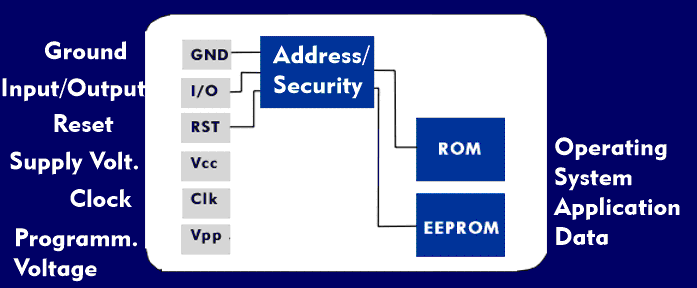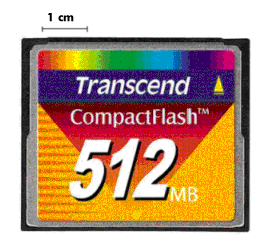memory card
- Memory cards are smart cards without their own processing power. They have a read-only memory( ROM) for the operating system as well as a memory, usually an Electrically Erasable PROM( EEPROM), and address and security logic. Such memory cards are designed for consumer-oriented and for company-specific applications and have limited functionality compared with a smart card. However, they are considerably less expensive. Typical examples of such memory cards are the electronic health card of health insurance companies, cash cards, shopping cards of retail chains, telephone cards, club cards, and many others.
- Memory cards are also small memory expansion cards that have a write and read memory. They are used in laptops, notebooks, handhelds, MP3 players, digital cameras and camcorders to store image or music files. Most of these non-volatile memory cards operate as NAND flashes. One of the better-known card standards is the PCMCIA card, which was later renamed the PC card and replaced by the ExpressCard in 2004. The PCMCIA card is a plug-in card in credit card format that comes in three different thicknesses. The smaller memory cards, which are considerably smaller and thinner than the PC card, come in various incompatible types, but all operate as flash memory and can be connected to the PC card bus via appropriate adapters. These include SmartMedia Card, Compact Flash Card( CF), Multimedia Card( MMC), MemoryStick( MS), xD card, Secure Digital Card( SD) and microSD card. Newer memory cards that feature much higher read/write speeds include Sony's CFast and XQD cards. For embedded applications in mobile devices, the eMMC card, Embedded Multimedia Card (eMMC) and Universal Flash Storage Card( UFS) have been developed and standardized by JEDEC. The latter achieves data rates of more than 1 Gbit/s. Memory cards are read in the peripheral devices in which they are used. However, there are also standalone flash card readers that transfer data much faster and are not format-bound, i.e. they support multiple flash memory formats. As a file system, memory cards used FAT32 and especially Extended File Allocation Table( exFAT) with a 64-bit address space.


